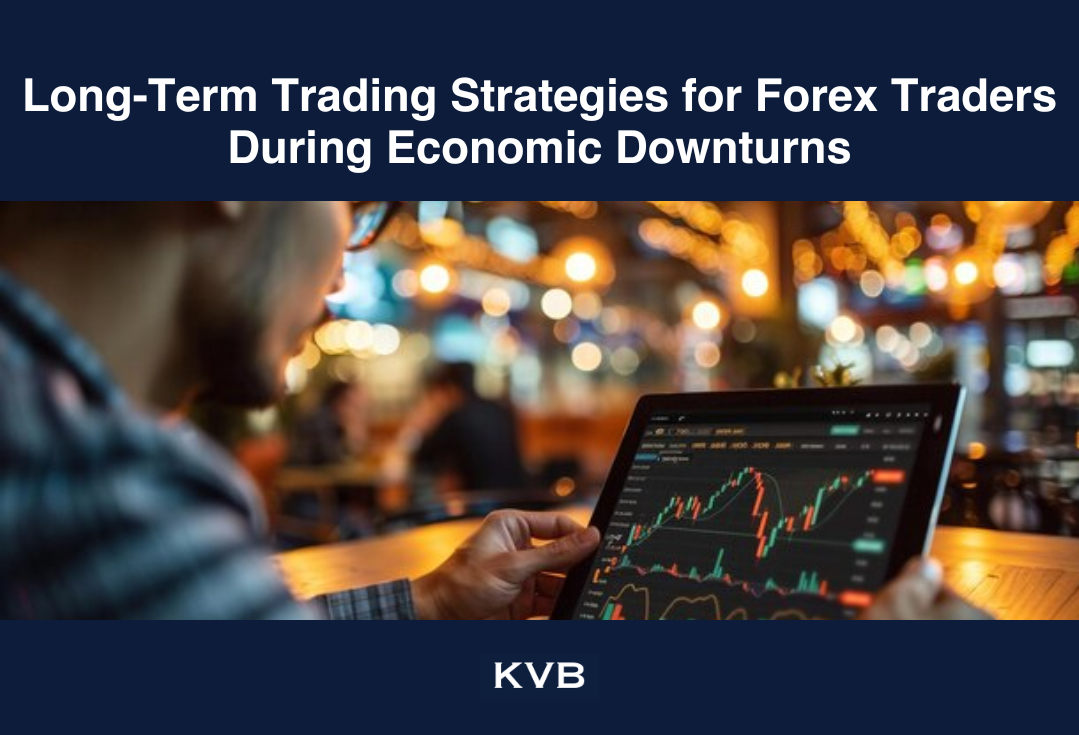


Economic downturns present unique challenges and opportunities for forex traders. When market conditions become unfavorable, long-term trading strategies can help navigate volatility and capitalize on emerging trends. Understanding how to adapt trading approaches during economic slowdowns is crucial for maintaining a robust trading plan and ensuring long-term success. This article explores key long-term trading strategies for forex traders during economic downturns, focusing on risk management, trend analysis, and diversification.
Understanding Economic Downturns
An economic downturn is characterized by a decline in economic activity, often marked by reduced consumer spending, lower business investment, and rising unemployment. These conditions typically lead to increased market volatility, which can affect currency prices. Forex traders must recognize that traditional trading strategies might need adjustment to account for the changing economic landscape. The key to thriving during these periods lies in developing a long-term trading strategy that addresses the unique risks and opportunities presented by a downturn.
1. Emphasizing Risk Management
During economic downturns, volatility often increases, making risk management more critical than ever. Here are several strategies to effectively manage risk in challenging market conditions:
Utilize Stop-Loss Orders: Setting stop-loss orders helps limit potential losses by automatically closing a position when the price reaches a specified level. This can prevent significant losses during periods of high volatility.
Adjust Position Sizing: In volatile markets, consider reducing position sizes to limit exposure. Smaller trades can help mitigate the impact of adverse price movements and maintain a balanced risk profile.
Diversify Currency Pairs: Diversification involves trading multiple currency pairs to spread risk. By avoiding concentration in a single currency pair, traders can reduce the impact of adverse movements in one market.
Monitor Economic Indicators: Stay informed about key economic indicators and central bank policies that can influence currency prices. Adjusting trading strategies based on economic data can enhance risk management.
2. Adapting Trend Analysis Techniques
Economic downturns can lead to shifts in currency trends, making it essential for traders to adapt their trend analysis techniques:
Focus on Longer Timeframes: During downturns, short-term price movements can be more erratic. Analyzing longer timeframes (e.g., daily, weekly) can provide a clearer view of underlying trends and reduce the impact of short-term volatility.
Identify Safe-Haven Currencies: In times of economic uncertainty, certain currencies such as the US Dollar (USD), Swiss Franc (CHF), and Japanese Yen (JPY) often serve as safe havens. Identifying these currencies and incorporating them into trading strategies can help navigate downturns.
Utilize Technical Indicators: Employ technical indicators such as moving averages, Relative Strength Index (RSI), and Bollinger Bands to identify trend reversals and potential entry/exit points. These tools can assist in making informed trading decisions.
Analyze Market Sentiment: Understanding market sentiment can provide insights into potential trends. Sentiment analysis involves gauging trader attitudes and expectations, which can help predict market movements during economic downturns.
3. Incorporating Fundamental Analysis
Fundamental analysis remains a crucial component of long-term trading strategies, especially during economic downturns:
Evaluate Economic Policies: Analyze fiscal and monetary policies implemented by governments and central banks. Changes in interest rates, quantitative easing measures, and fiscal stimulus packages can significantly impact currency values.
Assess Economic Health: Monitor key economic indicators such as GDP growth, unemployment rates, and inflation. Understanding the broader economic context helps in making informed trading decisions.
Consider Geopolitical Factors: Geopolitical events and uncertainties can influence currency markets. Stay informed about global political developments, trade agreements, and international relations that may affect currency prices.
4. Developing a Long-Term Trading Plan
A well-structured long-term trading plan is essential for navigating economic downturns:
Set Clear Objectives: Define long-term trading goals and establish a plan to achieve them. Whether it's capital preservation, steady growth, or income generation, having clear objectives helps guide trading decisions.
Create a Trading Routine: Develop a consistent trading routine that includes regular market analysis, strategy evaluation, and performance review. A disciplined approach helps maintain focus and adapt to changing market conditions.
Evaluate and Adjust Strategies: Periodically review trading strategies to assess their effectiveness. Adjust tactics based on market conditions, economic developments, and personal performance.
Maintain a Trading Journal: Keep a detailed trading journal to record trades, strategies, and outcomes. Analyzing past trades can provide valuable insights and help refine future strategies.
5. Embracing Technological Tools
Leveraging technology can enhance long-term trading strategies:
Automated Trading Systems: To execute trades according to predetermined criteria, think about utilizing automated trading systems. These tools can lessen irrational decision-making and aid in the effective management of trades.
Trading Platforms and Tools: Utilize advanced trading platforms and tools that offer real-time data, technical analysis, and risk management features. Making educated trading decisions can be facilitated by these resources.
Stay Updated with News and Analysis: Use financial news services and analysis tools to stay informed about market developments and economic events. Access to timely information helps in adapting strategies to current conditions.
Conclusion
Long-term trading during economic downturns requires a strategic approach that emphasizes risk management, trend analysis, fundamental insights, and a well-structured plan. By adapting strategies to the unique challenges of a downturn, forex traders can navigate volatility, capitalize on emerging trends, and achieve long-term success. Embracing technological tools and staying informed about economic developments further enhances the ability to make informed trading decisions.
Disclaimer
Derivative investments involve significant risks that may result in the loss of your invested capital. You are advised to carefully read and study the legality of the company, products, and trading rules before deciding to invest your money. Be responsible and accountable in your trading.
RISK WARNING IN TRADING
Transactions via margin involve leverage mechanisms, have high risks, and may not be suitable for all investors. THERE IS NO GUARANTEE OF PROFIT on your investment, so be cautious of those who promise profits in trading. It's recommended not to use funds if you're not ready to incur losses. Before deciding to trade, make sure you understand the risks involved and also consider your experience.
